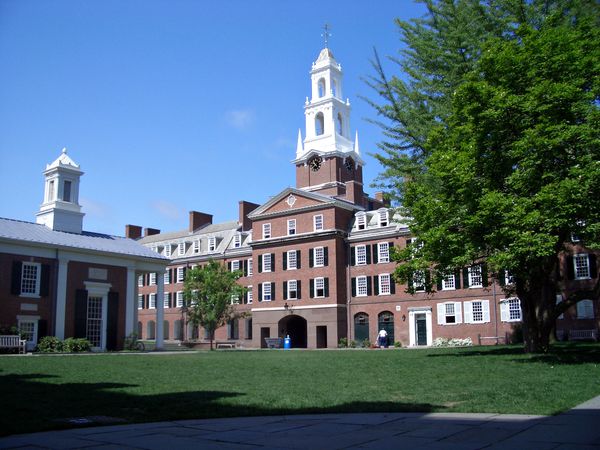During the fall, three other Miami University students and I had the opportunity to travel to Middletown, Ohio, on October 11 to help teach the students at Rosa Parks Elementary for the day. I did my research on Middletown before going. According to City-Data.com, 24.2 percent of Middletown residents had an income below the poverty level in 2017, which was 42.4 percent greater than the poverty level of 14 percent across the entire state of Ohio. With a little more info, I knew I'd be focusing on kids who branch off from families of the lower class and are in or near poverty.
With the help of the Center of Science and Industry (COSI), my peers and I taught the kids about potential and kinetic energy, contact and non-contact force, circuits, and magnets. COSI is a science museum and research center located in Columbus, Ohio. Its end goal is to inspire interest in science, technology, engineering, and math while at the same time delivering an experiential, "hands-on fun" brand of learning. Even though they were at an elementary school that day, COSI's targeted group is everybody, no matter their age, background, or ability.
Rosa Parks Elementary hired COSI to give a whole-school assembly and smaller hands-on sessions throughout the day for the kids. On top of the $1,090 fee to bring in COSI, the school also needed to provide its own volunteers for setup, activities, and tear down. It appeared that the school reached out to Miami University for assistance considering the majority of the volunteers came from there either for service hours or just to lend a helping hand.
I went to Westlake in Ohio during my years of schooling. It was a nice city located in the suburbs. Any time the school would need volunteers, the majority of the time it would be parents filling in the role. Even if some of the parents weren't available, the older sibling of that student would most likely fill in. I don't know for sure, but considering that all the volunteers were students, it made me wonder if it was because the parents were unavailable. Perhaps they were working, or maybe the school just never considered asking parents.
Before the set up for the stations began, I went to the restroom and afterward took the opportunity to look around the school. The first thing that I noticed was how small it was, but what really caught me by surprise was the Gacha machines posted outside the cafeteria and the classrooms. A Gacha machine is one of those little machines that's filled with prizes such as little cheap toys and stickers that require you to put in coins and crank them to receive your prize. I was extremely caught off guard seeing this. These are the sort of things you would expect to see at places such as Walmart or Kroger, not an elementary school for grades K through 6th, kids age 5 through 11. Little kids whose minds are only beginning to develop are spending money that for all we know could be part or even all of their lunch money so they can get their desired prize out of these machines.
As I was heading back, there was a line of kids who just walked in that were crowded around spending their money on the machine. I'm surprised that the school would allow something like that. Just imagine working hard to give your child money so they can learn with a full stomach to realize they have been using it to get some cheap toy.
About 10 minutes into the assembly, I noticed that there were a lot of kids who were coming in late. Multiple kids had reasons for their tardiness. I heard "my mom's car wouldn't start" and "my dad overslept." As they all went to rejoin the class, I noticed that all those kids were non-white, and the same goes for the majority of the school.
After the big assembly, the kids were divided by their homeroom teachers, and each class got to experience the various stations COSI had set up for the students to explore. I noticed how many students each homeroom teacher had in their class. This reminded of the video I was once assigned to watch about private school versus public school. More specifically, I thought of when the video discussed the ratio of students assigned to a teacher and the fact that in a public school, teachers would almost get two times the number of students compared to what a private school teacher would receive.
The stations that were set up were U-Shaped Ramps, where students would observe and experience energy transfer, conservation of energy, and momentum; Bright Ideas, where the kids explored how moving magnets can create electricity; and It's A-maze-ing, where the kids investigated properties of light such as reflection, absorption, and traveling in a straight line. Other stations included Science Friction Double Feature, where students explored how friction changes the motion of an object; Electric Avenue, where the kids learned about electrical circuits and the components needed to use various types of circuits by building their own; I've Got the Power, where the students investigated conductors and insulators of electricity by testing the materials themselves; and a station called S.A.M.M. The kids got to engineer their own chain reaction machine and explore the physics of force and motion and see examples of simple machines.
One of the more popular stations was Boom Goes the Domino, where the students explored potential and kinetic energy as well as contact force by making massive domino chains and knocking them down. That was the station where my group and I were assigned. During the volunteer's break period, we were treated to pizza. Some of the kids outside were looking through the glass, and I even heard one of them ask why they couldn't get stuff like that. They're just kids, so it's normally not surprising you would hear them say something along those lines, but I thought about it more. At the time, all they saw was the pizza. What do they serve at their cafeteria? I thought pizza was like a staple food in all schools. To see things like the Gacha machines when school is supposed to be a place for learning is still unbelievable to me.
The whole volunteer experience really showed me how different I had it at my elementary school, and it honestly made me appreciate it a lot more.



















